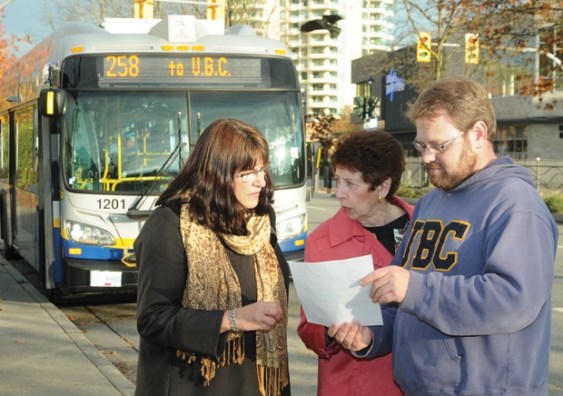TransLink is tinkering with a number of its North Shore bus routes affecting transit users who ride to Upper Lonsdale, Lynn Valley and Horseshoe Bay.
First on the list is the removal of a number of stops from the 257 express route between downtown Vancouver and the Horseshoe Bay ferry terminal.
Starting in May, passengers may no longer board or get off at the Bute Street, Broughton Street and Cardero Street stops in Vancouver, at the onramp to the Lions Gate Bridge, at 15th Street in Ambleside or at any of the three stops in Horseshoe Bay before the ferry terminal.
The change is meant to make travel time quicker for the 85 per cent of express bus riders who use the remaining stops, according to Tim Savoie,
TransLink’s vice-president of transportation planning.
In June, TransLink will be chopping all of the 242’s stops north of 29th Street and reroute the bus directly to Lynn Valley Town Centre, similar to the N24 night bus.
Eliminating the upper Lonsdale loop part of the route ought to ensure more consistent early morning service between Lynn Valley and downtown before SeaBus operations start, Savoie said. Those cut out of the route will still have access to the 230 bus and the ability to transfer to the 242 bus.
Later this year, big changes are coming to the 254 and 256 routes that serve the British Properties. Rather than being one-way loops through the properties, TransLink will introduce two-way service. Roughly 4,000 to 5,000 people per day ride the two routes and the two-way service is expected to help local students, especially those who attend Sentinel secondary, Savoie said
TransLink is also shelving plans to cancel the 258 UBC route entirely after facing blowback from West Vancouver riders and the district’s mayor.
Next steps include further data collection and ridership analysis and working with the municipality, Savoie said. The North Shore transit adjustments are part TransLink’s annual transit network review, which aims to fine tune service based on riders’ needs – without any extra cash.
“We have some routes that are overcrowded so we’re trying to reduce overcrowding on some routes. Some areas don’t have any service so we’re trying to provide service,” Savoie said. “This is all within our current funding envelope. ... We need to serve more customers with no new funding.”



